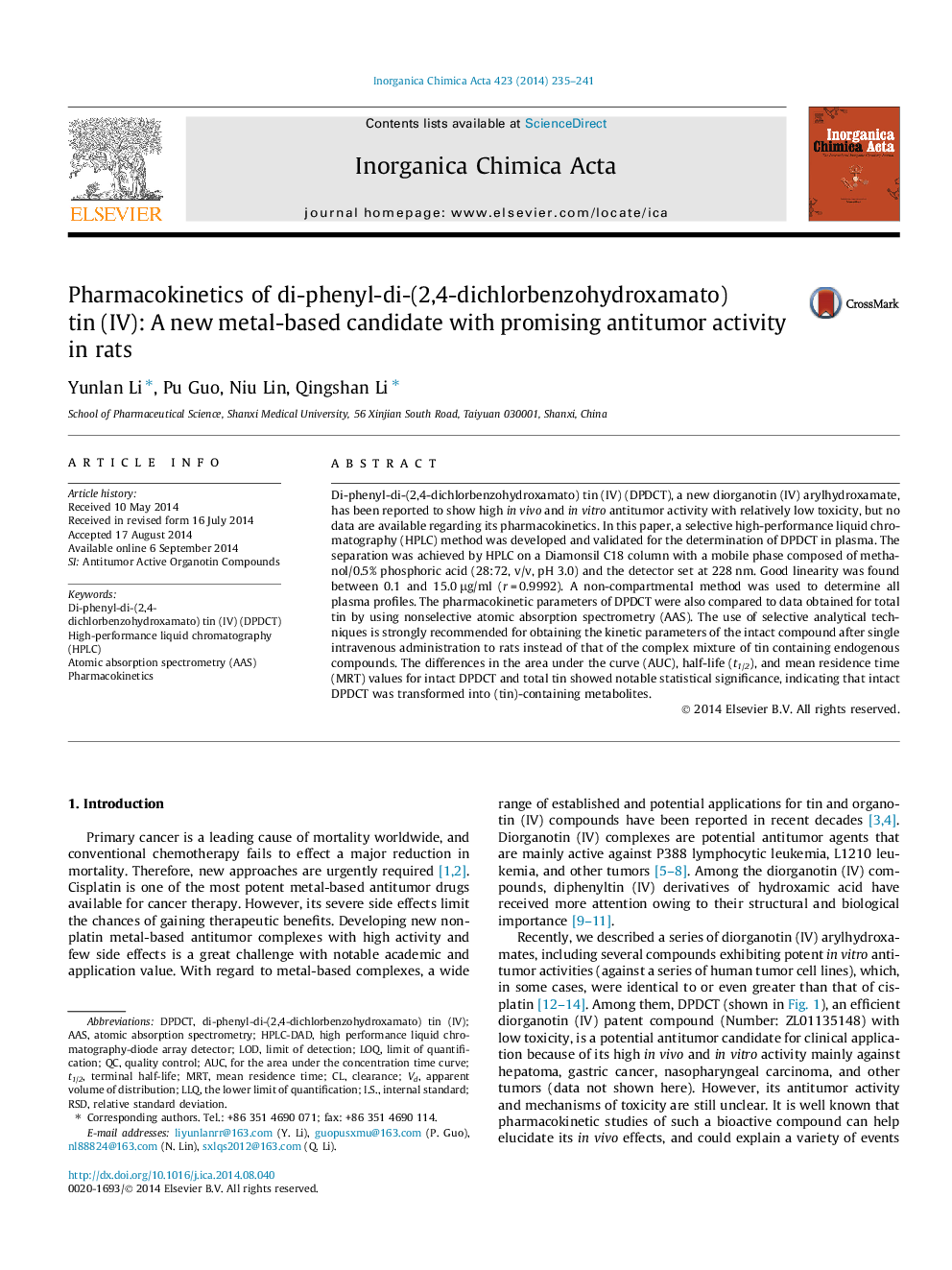| کد مقاله | کد نشریه | سال انتشار | مقاله انگلیسی | نسخه تمام متن |
|---|---|---|---|---|
| 1309362 | 975204 | 2014 | 7 صفحه PDF | دانلود رایگان |

• A new diorganotin DPDCT has showed high in vitro antitumor activity.
• Pharmacokinetic parameters of DPDCT were compared to which of total tin by AAS.
• Pharmacokinetics indicated DPDCT was transformed into tin-containing metabolites.
• Comparing DPDCT and total tin provided a deep insight into properties of DPDCT.
Di-phenyl-di-(2,4-dichlorbenzohydroxamato) tin (IV) (DPDCT), a new diorganotin (IV) arylhydroxamate, has been reported to show high in vivo and in vitro antitumor activity with relatively low toxicity, but no data are available regarding its pharmacokinetics. In this paper, a selective high-performance liquid chromatography (HPLC) method was developed and validated for the determination of DPDCT in plasma. The separation was achieved by HPLC on a Diamonsil C18 column with a mobile phase composed of methanol/0.5% phosphoric acid (28:72, v/v, pH 3.0) and the detector set at 228 nm. Good linearity was found between 0.1 and 15.0 μg/ml (r = 0.9992). A non-compartmental method was used to determine all plasma profiles. The pharmacokinetic parameters of DPDCT were also compared to data obtained for total tin by using nonselective atomic absorption spectrometry (AAS). The use of selective analytical techniques is strongly recommended for obtaining the kinetic parameters of the intact compound after single intravenous administration to rats instead of that of the complex mixture of tin containing endogenous compounds. The differences in the area under the curve (AUC), half-life (t1/2), and mean residence time (MRT) values for intact DPDCT and total tin showed notable statistical significance, indicating that intact DPDCT was transformed into (tin)-containing metabolites.
Plasma concentration–time profiles of di-phenyl-di-(2,4-dichlorbenzohydroxamato) tin (IV) (DPDCT), total tin and ratios of DPDCT/total tin in rats after intravenous administration of 6 mg/kg of DPDCT. The features consist of two things: mean plasma concentration–time profiles of DPDCT and total tin, and mean ratios of DPDCT/total tin. The decrease in DPDCT/total tin ratio seems to be biphasic. Each point represents the mean concentration of six rats. Those results were from male and female.Figure optionsDownload as PowerPoint slide
Journal: Inorganica Chimica Acta - Volume 423, Part B, 1 November 2014, Pages 235–241